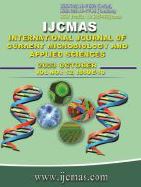


 National Academy of Agricultural Sciences (NAAS)
National Academy of Agricultural Sciences (NAAS)

|
PRINT ISSN : 2319-7692
Online ISSN : 2319-7706 Issues : 12 per year Publisher : Excellent Publishers Email : editorijcmas@gmail.com / submit@ijcmas.com Editor-in-chief: Dr.M.Prakash Index Copernicus ICV 2018: 95.39 NAAS RATING 2020: 5.38 |
Small subunit (16S rRNA) gene-based surveys were employed to investigate the phylogenetic diversity within the unique muscovite ecosystem. This approach unveiled a broader scope of diversity compared to traditional culture-based methods. Notably, yanobacterial diversity remained remarkably stable at the phylum level, underscoring the ecological resilience of Muscovite. In Muscovite, the phylum Cyanobacteria accounted for 0.5983% of the microbial population. Within this phylum, classes including ML635J-21, Nostocophycideae, Synechococcophycideae, and Oscillatoriophycideae were identified, alongside an unclassified category. Notably, 517 cyanobacterial clones were detected, signifying their presence in the microbial community. Intriguingly, a substantial proportion (0.2616%) of cyanobacterial clones fell into unclassified orders, indicating potential unidentified microbial lineages within this group. Among the identified classes, ML635J-21 exhibited the highest abundance, with 225 clones. However, all classes within Cyanobacteria were underrepresented. The presence of an unclassified category further highlighted the need for comprehensive taxonomic characterization within this environment. These results emphasize the diverse and potentially novel cyanobacterial communities thriving in the Muscovite ecosystem, prompting further exploration to uncover their ecological roles and contributions.
 |
 |
 |
 |
 |